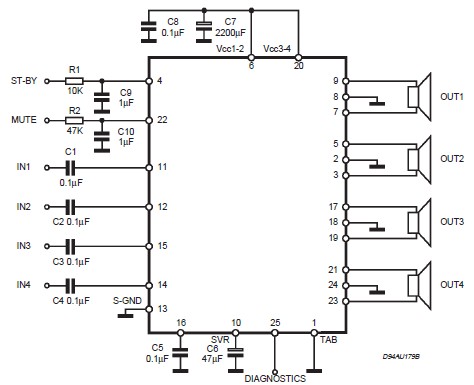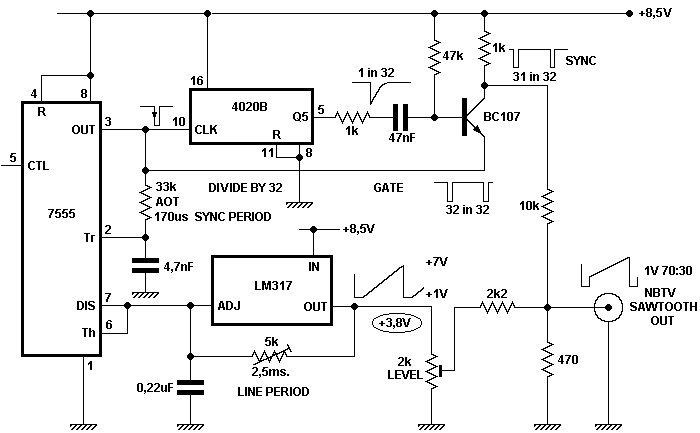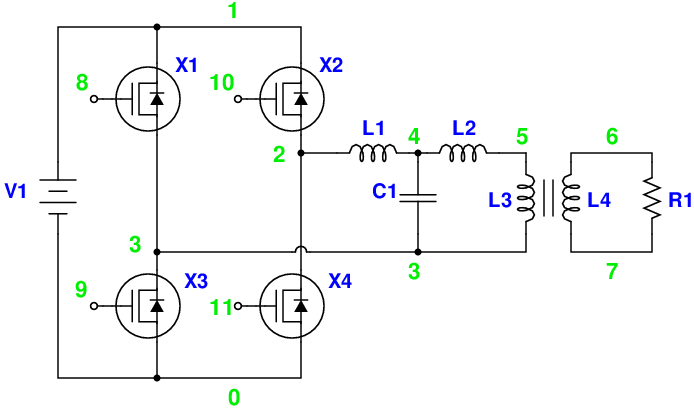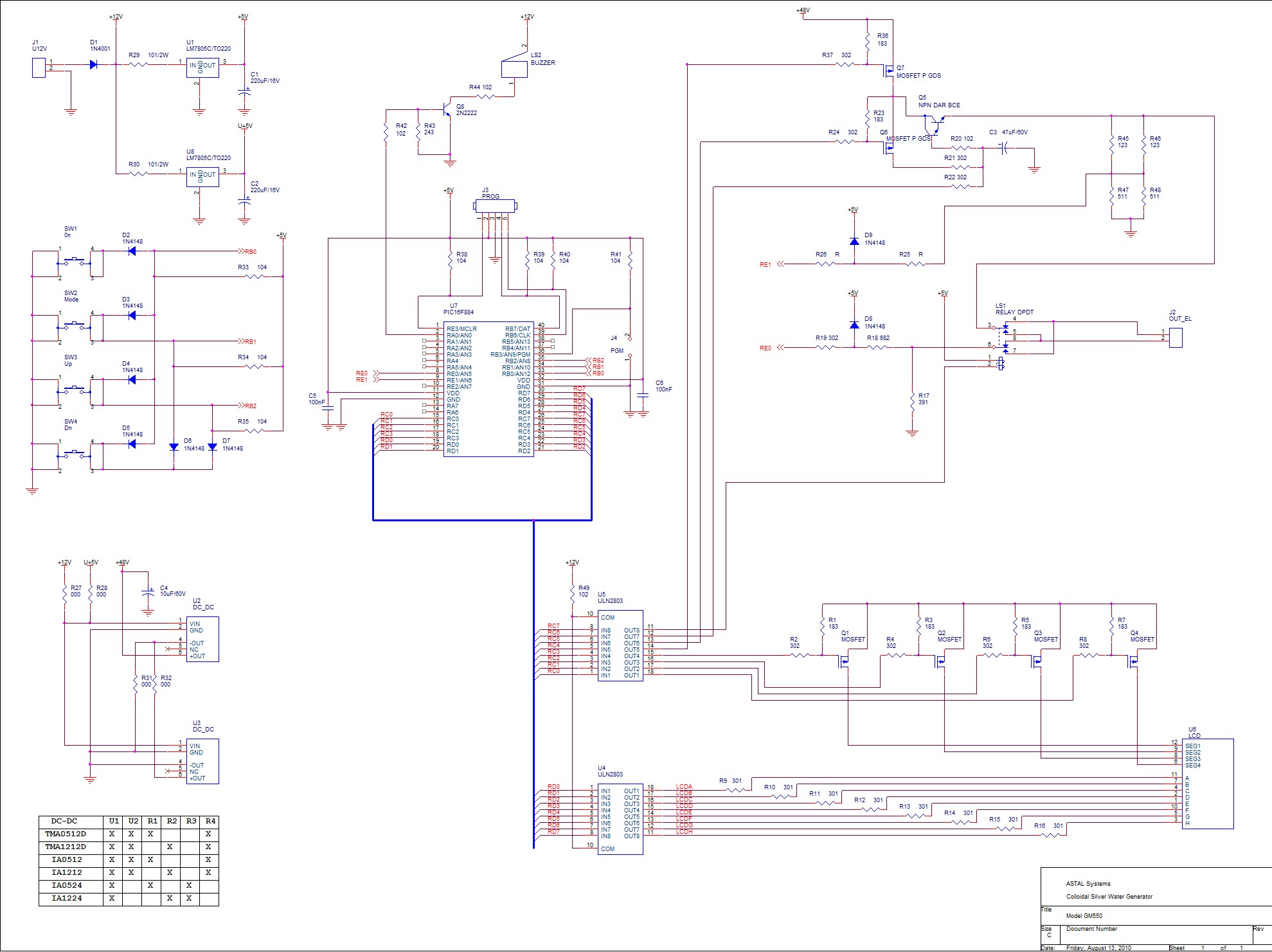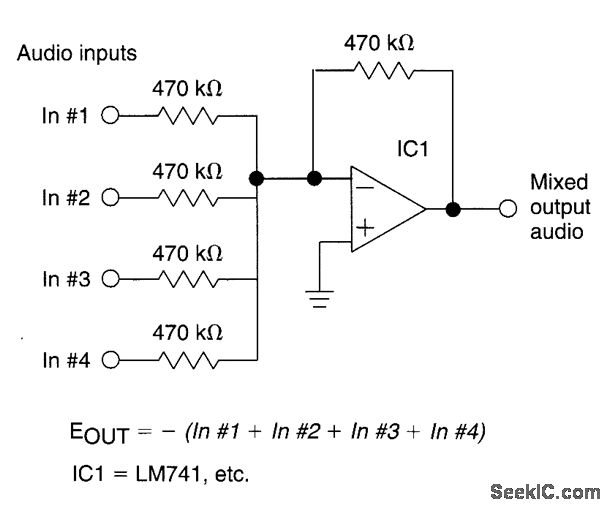
Audio Triangle Square Wave Generator Using Op-Amp
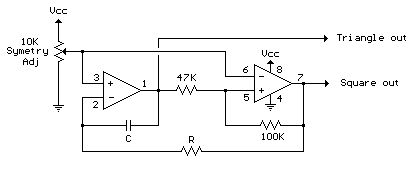
The circuit illustrates a straightforward triangle and square wave generator utilizing a common dual operational amplifier, the LM1558, capable of producing very low frequencies around 10 kHz. The time interval for one half-cycle is approximately determined by the product of resistance (R) and capacitance (C), with a supply output of 10 mA. The amplitude of the triangle wave can be modified by adjusting the 47 kΩ resistor, and the waveform offset can be removed by incorporating a capacitor in series with the output.
The triangle and square wave generator circuit is designed using the LM1558 dual operational amplifier, which is a versatile component for generating low-frequency waveforms. The circuit operates by charging and discharging a capacitor through resistors, creating a linear ramp voltage that forms the triangle wave. The square wave is derived from the triangle wave by using a comparator configuration within the operational amplifier.
In this configuration, the timing components consist of a resistor (R) and a capacitor (C) connected in an RC network that determines the frequency of oscillation. The relationship between R, C, and frequency can be expressed as f = 1/(2πRC), where f is the frequency of the output waveform. For a target frequency of around 10 kHz, suitable values for R and C must be selected to meet this requirement.
The amplitude of the triangle wave output is adjustable via the 47 kΩ resistor. By changing this resistor's value, the charging and discharging rates of the capacitor are altered, thus varying the peak-to-peak voltage of the triangle wave. Additionally, to eliminate any DC offset in the output waveform, a capacitor can be placed in series with the output. This capacitor blocks any DC component, allowing only the AC signal to pass through, ensuring a cleaner output signal.
Overall, this circuit provides a reliable method for generating triangle and square waves at low frequencies, making it suitable for applications in signal processing, waveform generation, and testing electronic components. Proper component selection and configuration are crucial for achieving the desired output characteristics.The circuit shows a simple triangle and square wave generator with a common dual operational amplifier LM1558 to produce very low frequencies around 10 kHz. The time interval for one half cycle is about R * C and outs of supply of 10 mA. The amplitude of the triangle can be altered by adjusting the 47K and waveform offset can be eliminated by addi
ng a capacitor in series with the output. 🔗 External reference
The triangle and square wave generator circuit is designed using the LM1558 dual operational amplifier, which is a versatile component for generating low-frequency waveforms. The circuit operates by charging and discharging a capacitor through resistors, creating a linear ramp voltage that forms the triangle wave. The square wave is derived from the triangle wave by using a comparator configuration within the operational amplifier.
In this configuration, the timing components consist of a resistor (R) and a capacitor (C) connected in an RC network that determines the frequency of oscillation. The relationship between R, C, and frequency can be expressed as f = 1/(2πRC), where f is the frequency of the output waveform. For a target frequency of around 10 kHz, suitable values for R and C must be selected to meet this requirement.
The amplitude of the triangle wave output is adjustable via the 47 kΩ resistor. By changing this resistor's value, the charging and discharging rates of the capacitor are altered, thus varying the peak-to-peak voltage of the triangle wave. Additionally, to eliminate any DC offset in the output waveform, a capacitor can be placed in series with the output. This capacitor blocks any DC component, allowing only the AC signal to pass through, ensuring a cleaner output signal.
Overall, this circuit provides a reliable method for generating triangle and square waves at low frequencies, making it suitable for applications in signal processing, waveform generation, and testing electronic components. Proper component selection and configuration are crucial for achieving the desired output characteristics.The circuit shows a simple triangle and square wave generator with a common dual operational amplifier LM1558 to produce very low frequencies around 10 kHz. The time interval for one half cycle is about R * C and outs of supply of 10 mA. The amplitude of the triangle can be altered by adjusting the 47K and waveform offset can be eliminated by addi
ng a capacitor in series with the output. 🔗 External reference
